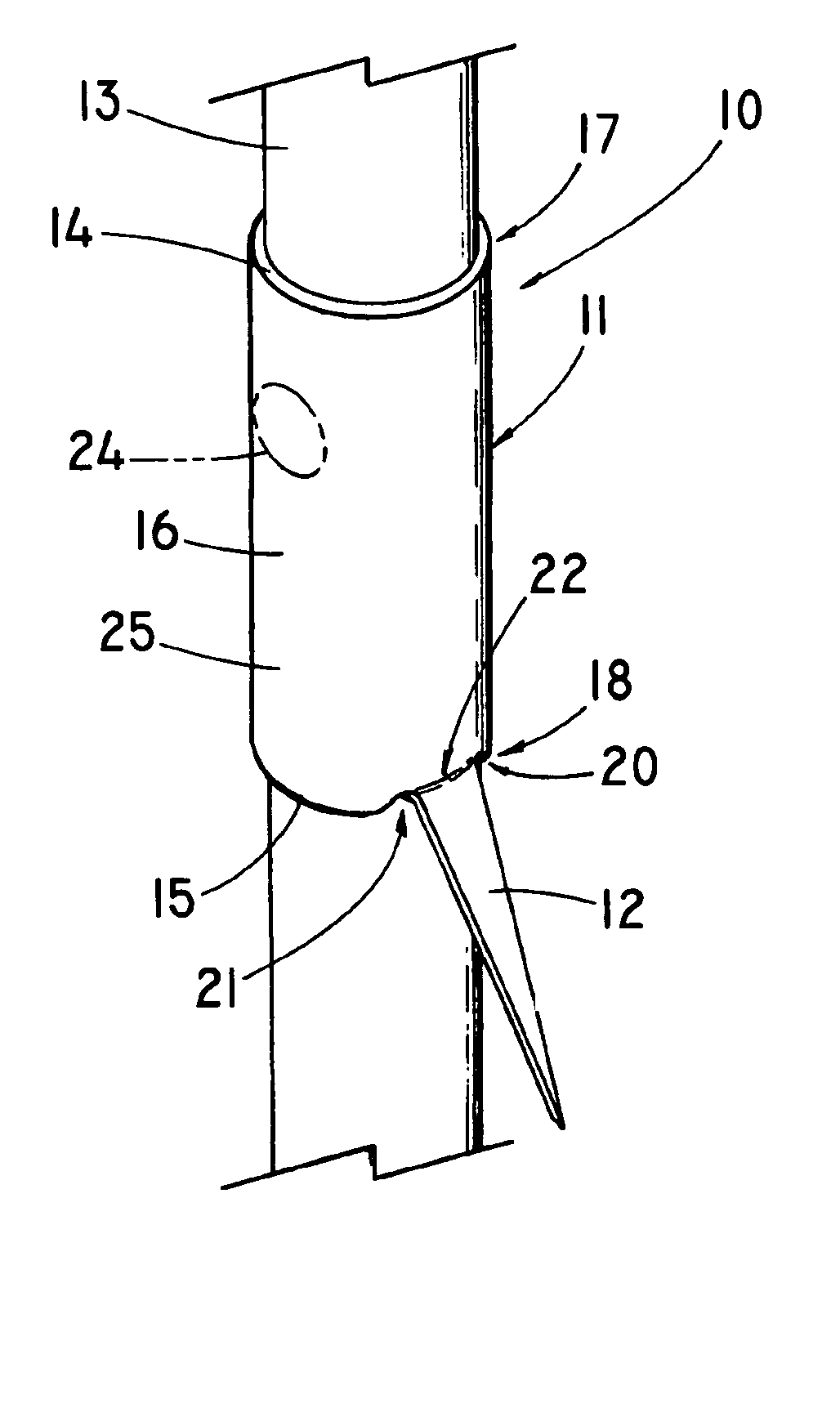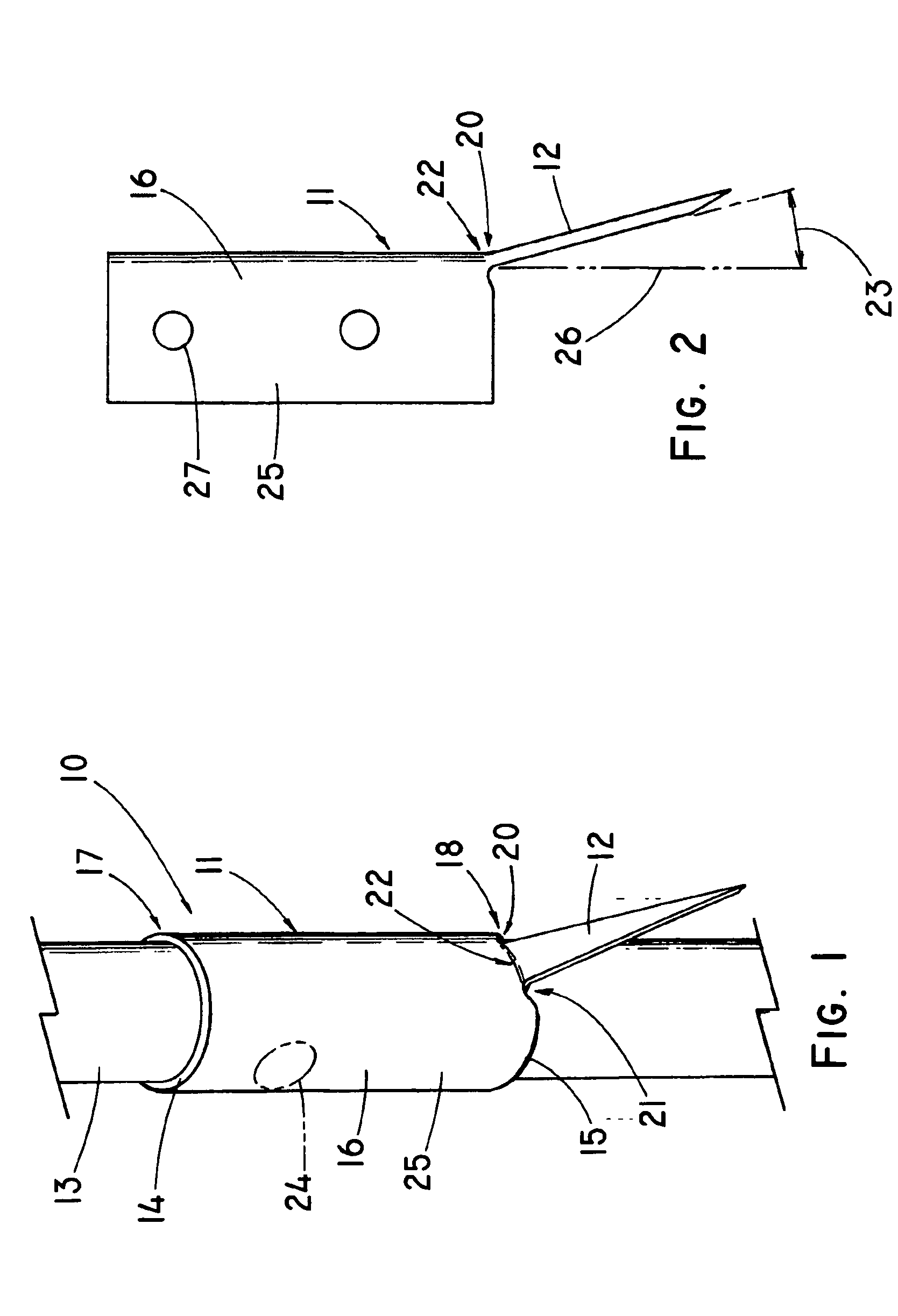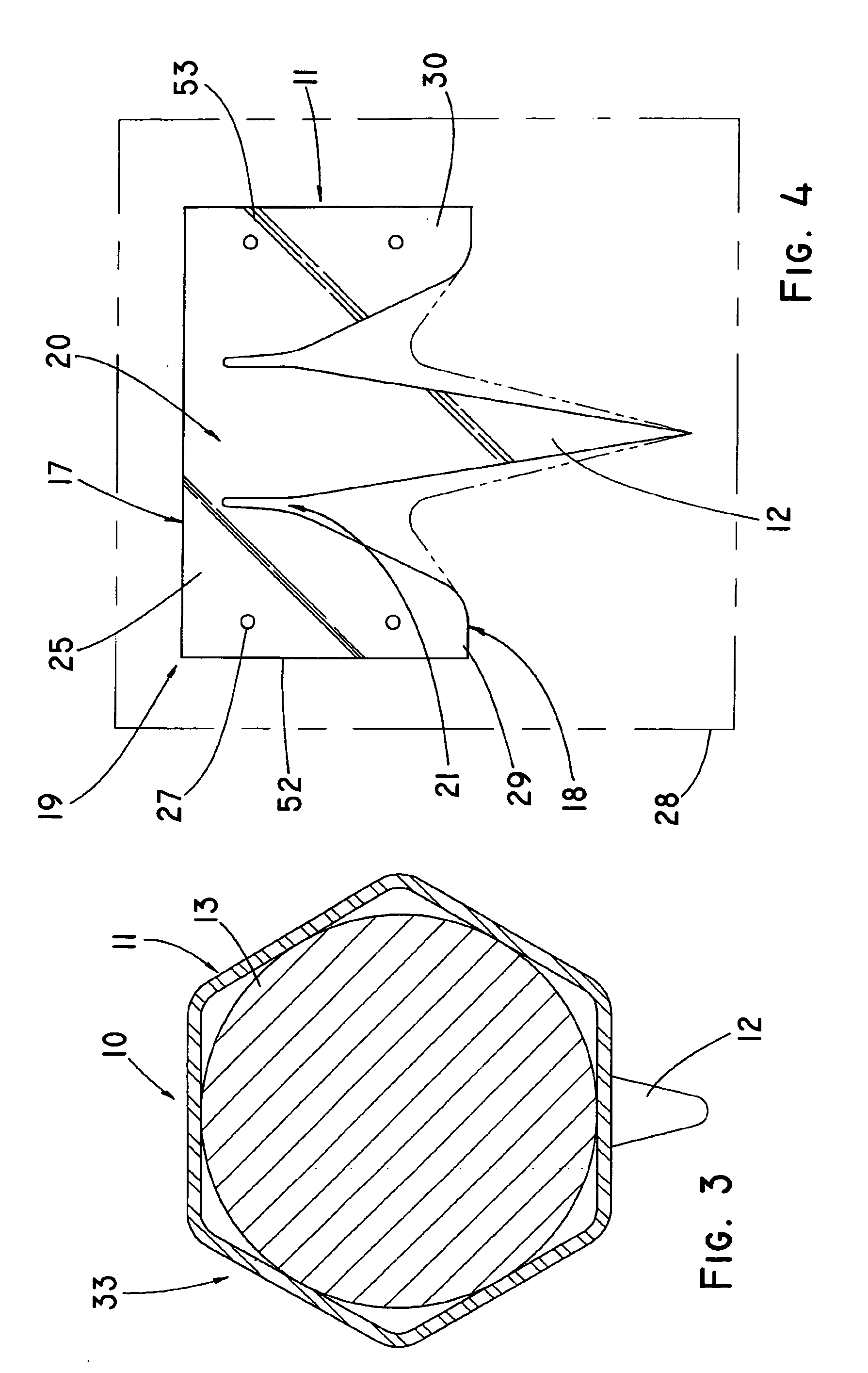Anchoring barb for attachment to a medical prosthesis
a technology for attaching barbs and prostheses, which is applied in the field of medical devices, can solve the problems of limiting the overall effect of metal microstructure, corrosion and/or breakage of solder joints, and achieve the effect of improving tissue penetration
- Summary
- Abstract
- Description
- Claims
- Application Information
AI Technical Summary
Benefits of technology
Problems solved by technology
Method used
Image
Examples
Embodiment Construction
[0025] The present invention, as embodied by FIGS. 1-16, comprises a an intraluminal medical prosthesis 10 that includes an anchoring element 11 having a barb 12 adapted for penetrating tissue to prevent migration of the prosthesis, the anchoring element 11 being formed from a thin layer of material 14, such as a portion of metal cannula 16 or flat sheet of metal 28 (e.g., stainless steel or nitinol) or other suitable material and configured such that the anchoring element 11 at least partially surrounds or encloses at least one strut 13 of the framework of the prosthesis 10, whereby the anchoring element 11 is either fixedly or slidably secured to a strut or elongate member 13 of the support structure or frame of the prosthesis. The configuration of the strut and prosthesis support structure is not particularly critical to the understanding of the invention. It should also be noted that the term ‘cannula’, used herein, is defined to encompass both an anchoring element that is origi...
PUM
 Login to View More
Login to View More Abstract
Description
Claims
Application Information
 Login to View More
Login to View More - R&D
- Intellectual Property
- Life Sciences
- Materials
- Tech Scout
- Unparalleled Data Quality
- Higher Quality Content
- 60% Fewer Hallucinations
Browse by: Latest US Patents, China's latest patents, Technical Efficacy Thesaurus, Application Domain, Technology Topic, Popular Technical Reports.
© 2025 PatSnap. All rights reserved.Legal|Privacy policy|Modern Slavery Act Transparency Statement|Sitemap|About US| Contact US: help@patsnap.com



